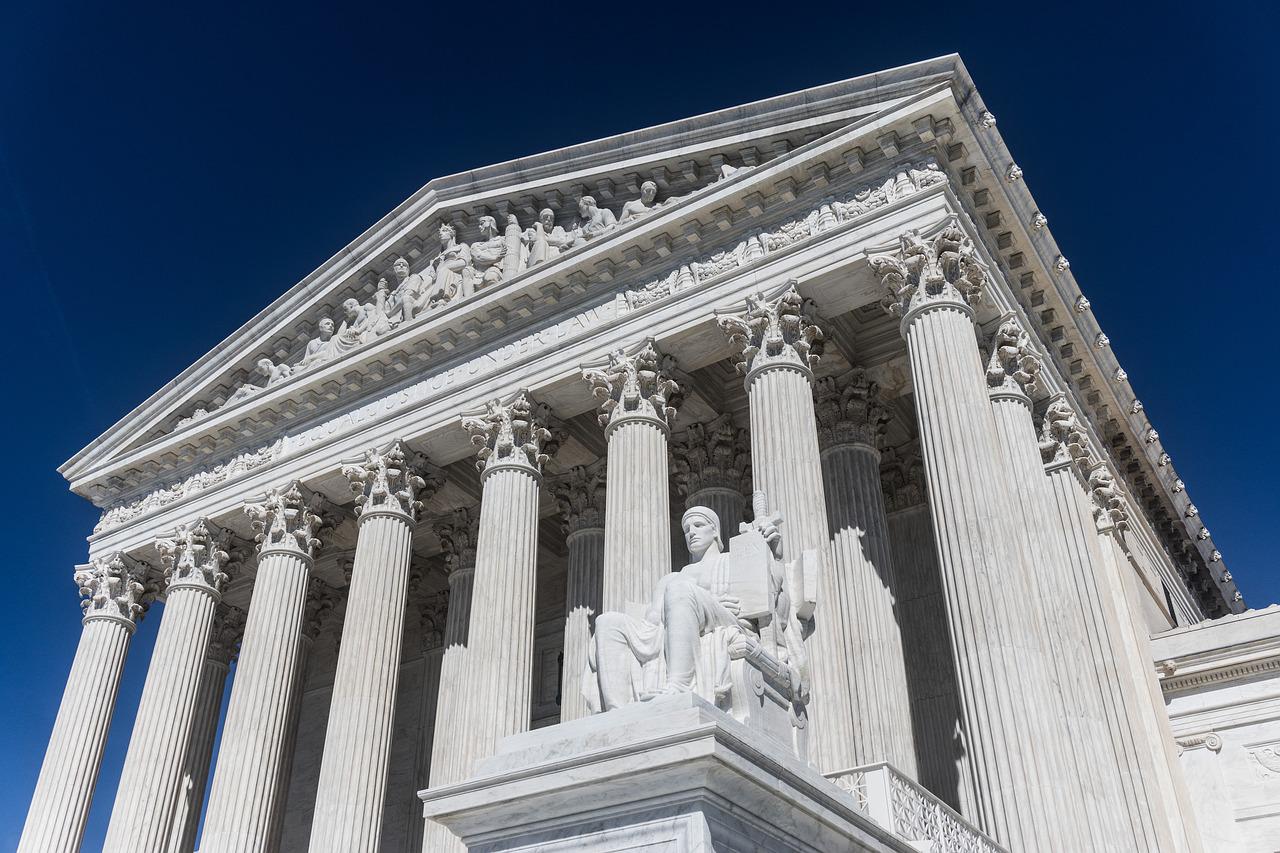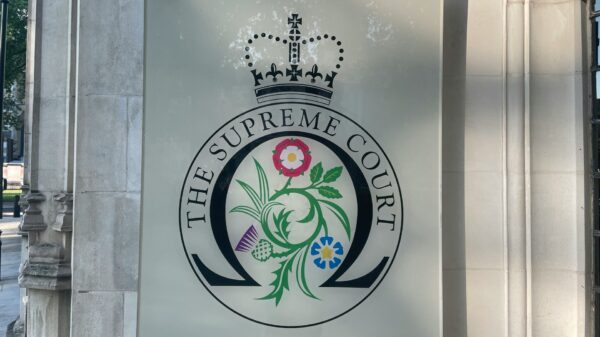Comment editor Fintan Hogan and contributor Kiren Graziano address the parallels between the Met Gala’s Gilded Age theme and a new challenge to abortion rights in the US.
On Monday May 2, six hundred attendees took to the Met steps in homage to “the grandeur of New York in the late 19th century”. That same evening, Politico released a US Supreme Court (SCOTUS) draft majority opinion advocating returning abortion rights to those of that same century. The metaphor of the Gilded Age is as pertinent as ever aristocratic glitz masking dramatic inequalities and the fragility of rights.
The US Gilded Age extended from the 1870s to the early 1900s, a period of “gross materialism and political corruption”. The “gilded” description was coined by Mark Twain in his 1973 novel to express the superficial glamour of contemporary American society. But like a gold leaf, this veneer was entirely superficial.
The richest 4,000 families held as much wealth as the other 11.6 million. In 1870, life expectancy was only 40 years, while elites like Rutherford B. Hayes and Grover Cleveland lived to over 70, demonstrating the substantial health inequalities which plagued the Gilded Age. During this period, medical procedures including abortion became regulated and restricted to an unprecedented extent.
The American Medical Association (AMA) was formed as an overwhelmingly male body in 1847, to scrutinise the work of reproductive healthcare practitioners. This led to a “century of criminalisation”, with abortion being restricted in all states by 1880, largely as a result of the AMA’s extensive campaigns, leading to a substantial rise in the use of underground services. Women who had to use these illegal operations faced huge medical risks and were portrayed as “selfish”, “unpatriotic” and “ungodly” – even in cases of rape or abuse.
Severe reproductive restrictions were only ended by the case of Roe v Wade (1973). The right to a pre-viability abortion was found to be constitutional by SCOTUS under the “due process” clause of the 14th Amendment. A “woman’s right to privacy” has protected pre-viability abortions for half a century.
Yet Monday night shattered this precedent: as celebrities roamed the Gilded Age fashion exhibit at the Met, Politico released a draft majority opinion from the Supreme Court which expressly advocated overturning Roe v Wade.
The leaked document comes from the case Dobbs v Jackson Women’s Health Organization (JWHO). Brought by the JWHO, the case argues the viability period in which a woman’s right to abortion is protected. The majority opinion drafted by Justice Alito would hand abortion regulation back to the states: a sweeping decision that could see women in over 22 states lose their reproductive rights. Thirteen states already have “trigger laws” which would immediately restrict abortion access.
This case was expected to be contentious, however the leaked document is a complete reversal of the court’s policy of adhering to precedent. Alito’s argument was constructed in February, and will not necessarily be the final opinion of the court. However, the leak will put additional pressure on all Justices to vote along partisan lines. Reproductive rights are now expected to be a hugely salient topic in the upcoming midterm elections.
“We hold that Roe and Casey must be overturned”, states Alito. (Planned Parenthood v. Casey is the 1992 case specifying the provisions under which abortion is constitutionally protected.) Roe’s reasoning is decried as “exceptionally weak”, and the opinion claims that “abortion is a constitutional right has no basis in text, structure, history or tradition.”
Chief Justice John Roberts confirmed the validity of the leak on Tuesday, and Senate Republican Leader Mitch McConnell said that the leaker must face charges. The final ruling on Dobbs v JWHO is expected in June or July. Further leaks are unlikely, so it will be around two months until we know to what extent the draft majority opinion has been amended since February. Should Roe indeed be overturned, this will be a cornerstone success of conservative judicial action.
This line of reasoning has re-entered the legal mainstream as the court has shifted rightwards, particularly in the last 20 years. Since Amy Coney-Barrett’s appointment in 2020, SCOTUS has had a 6-3 conservative majority. Even at the time, commentators predicted that this would change the stance of the court on reproductive rights and risk the provisions of Roe. At the original 1973 decision, 5 Republican nominees joined the 2 Democratic ones in a 7-2 split. But we are now in a period of greater legal polarisation, especially as conservatives see the judiciary as a way to entrench values against liberal reform.
Biden has urged Congress to reinforce constitutional protection by passing legislation in case SCOTUS does indeed overturn Roe, calling abortion a “fundamental” right. Congress would need to pass such a bill through two narrow Democratic majorities in the Senate and House – currently split 50-50 and 221-209 respectively.
Yet such a legislative solution would not create the same security which has been taken for granted for the last fifty years. Congress could repeal such legislation, perhaps even as soon as this year if the Republicans win both Houses in the midterms (as they may well do). Achieving a Democratic supermajority to enshrine abortion rights as a constitutional amendment and thus overcome Justice Alito’s apparent concern that Roe is an over-extrapolation of implied rights is fanciful. Any Congressional legislation to protect abortion rights would also face substantial legal challenges brought by red states, delaying the implementation process.
There is some limited precedent of breaches in SCOTUS confidentially, but not to this extent. Ironically, it is not since the 1973 Roe case that such a high-profile decision was leaked in advance. This led to Chief Justice Berger codifying formal rules of conduct with regards to the press. In 2012, Justice Scalia said that he would “ruin the career” of anyone found to have “betrayed the confidence of the Court”.
Crucially, the leak has shattered what little remained of the deference to SCOTUS among citizens, states and lawmakers. Chief Justice Roberts was keen to avoid overturning legal precedent in order to retain the credibility of the court (and he is not affiliated with the Alito draft, despite being a Republican appointee), yet he has lost control since Trump’s last appointment.
While the 5-4 split before 2020 allowed him to be both Chief Justice and the “swing” Justice, Roberts is now to the left of the median Justice. His efforts to mitigate the judicial activism of the other conservative Justices appears to have failed. SCOTUS is now clearly a political body, closer to a third seat of government than the final and neutral arbiter of the law, as was constitutionally intended.
Most Americans still support the provision of abortion services, with only around 19% unconditionally against, according to Gallup, but conservatives are using the Court to suggest that abortion is a “states rights” issue. The World Health Organisation (WHO) declares that “restricting access to abortions does not reduce the number of abortions”. However, it does affect whether the abortions that women and girls attain are safe and dignified. Justice Alito’s Dobbs ruling advocates overturning half a century of precedent simply to further an ideological campaign and make the lives of poor women, in particular, less safe.
Banning abortion does not stop abortions from taking place. Making reproductive rights a state issue is particularly ridiculous, since, in reality, only women in Republican states who cannot afford to travel will be impacted by the ruling. The lives of these women will be less safe, more expensive, and closely scrutinised.
SCOTUS is floundering. The Founding Fathers have been found out. There is little insurance against the appointment of young, activist Justices who adhere to partisan lines. This is an issue of both left and right. It is naive to suggest that pure legal reasoning leads Coney-Barrett & Co. to dissent from Roe, when 5 of 7 Republicans in 1973 concurred. Appointments have become so flagrantly partisan that they now struggle to attract the support of over 55 Senators, while majorities in excess of 90 were commonplace until the 2000s.
And so the Court’s mysticism is dead. It is a (quite literally) leaking ship, thrown around by ideological waves of appointees.
Vogue was unintentionally right; Gilded Age politics is back in fashion. Unelected decision-makers, constitutionalism and incredulous judicial independence still characterise crucial issues of American politics. Like in Plessy v Ferguson (1896), basic rights are being handed back to states to create substantial national inequalities. Like in Lochner v New York (1905), individual protections are being struck down by a conservative Court for ideological purposes. Then, like now, partisanship was extreme. Scratch the surface and the democratic veneer is once again wearing thin.
















